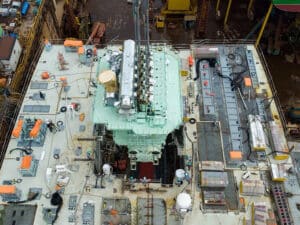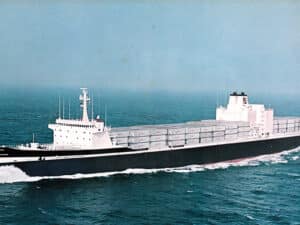
How USCG deals with Li-ion powered vessel plan review
Written by Nick Blenkey
FEBRUARY 13, 2017 — With newly affordable, high performing, light weight lithium ion batteries on the market today, many designers and operators are looking at new hybrid vessel designs,
A post in the U.S. Coast Guard’s Maritime Commons blog, extracted from a presentation by Marine Safety Center engineers Cdr. Sean Brady and Lt. Kate Woods, deals with plan review for battery power installations.
The Marine Safety Center (MSC) currently has more than a dozen different battery powered vessel designs under review, and while there is quite a bit of variation among the different proposals, each faces the same challenge. Any battery powered design submission must demonstrate that the new technology is equivalent to the level of safety afforded by the current regulations.
Prior to the development of lithium ion batteries for widespread applications in the maritime domain, alternative chemistries did not see much use aboard commercial vessels. Therefore, the current regulations address installations based on traditional lead acid battery design. While these regulations are well developed and appropriate for lead acid battery installations, there are key differences between the technologies described in the regulations and the battery technology that is commercially available today. These differences stem from the chemical make-up of the battery cells, the physical design of the casing or components, and methods for managing the charging/discharging cycle.
The MSC has the authority to evaluate equivalencies to the existing regulations in the absence of specific regulations. To best respond to the rapid innovation in the absence of a comprehensive industry standard for battery installations, MSC has taken a performance based approach to their equivalency reviews. A primary concern with non-traditional battery installation is the risk of thermal runaway and subsequent fires which threaten crew, passengers, cargo and the structural integrity of the vessel. To reduce overall risk, the MSC has identified the need to review designs for preventative controls and mitigation strategies should thermal runaway occur.
Designs should address the following factors:
- Maintenance of the system and emergency procedures in case of failure.
- Battery module design and functionality of the monitoring system.
- Capability of the battery management system to regulate charging and discharging.
- Climate control of the battery compartment and ventilation arrangement.
- Fire detection and suppression capability within the battery space.
- Structural fire protection surrounding the batteries, and emergency electrical isolation.
- Automation testing for the propulsion system where required.
Read the Maritime Commons post HERE





Leave a Reply
You must be logged in to post a comment.